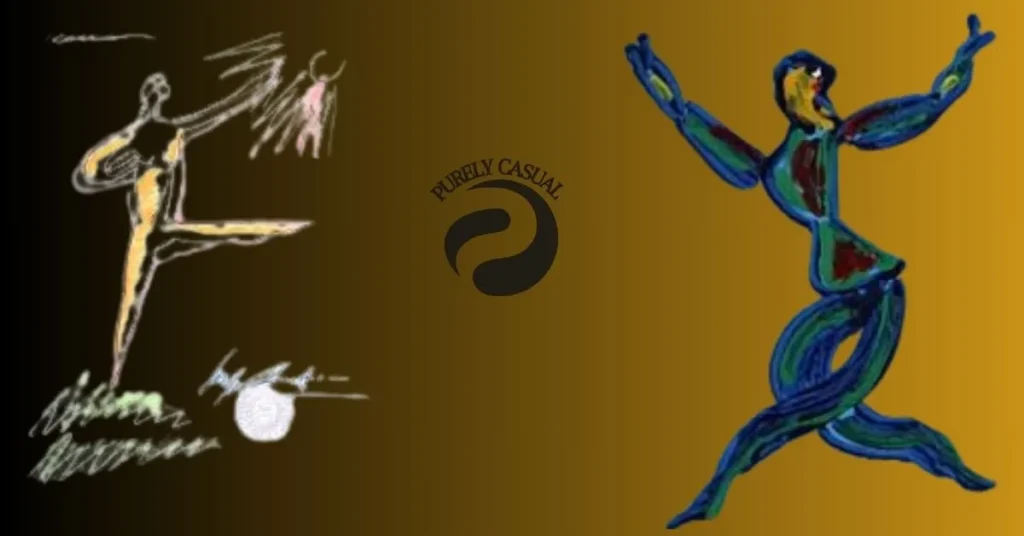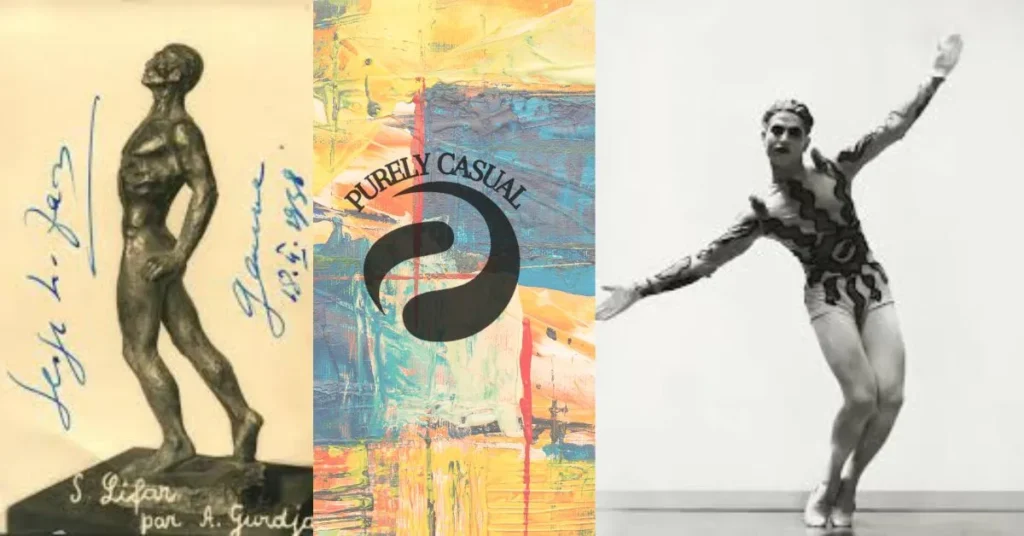Serge Lifar was a renowned ballet dancer and choreographer who revolutionized modern ballet. Known for his work with the Ballets Russes and the Paris Opera Ballet, Lifar made a significant impact on the dance world. However, his artistic talents extended beyond the stage into the realm of visual art.
While Lifar’s contributions to ballet are widely celebrated, his visual artworks are less well-known. His artistic creations offer a unique perspective on his creativity and passion. Lifar began exploring art later in his career, influenced by his collaborations with leading artists of his time.
Lifar’s artworks often reflect his deep understanding of movement and form. He used vibrant colors and dynamic compositions to capture the essence of dance. His visual creations showcase the same energy and innovation that defined his choreography.
The themes in his visual works are closely related to his experiences in ballet. He frequently depicted dancers and mythological scenes, blending elements of modernism and surrealism. This fusion of styles creates a distinctive and engaging visual language.
Lifar’s artistic output reveals how his background in dance informed his approach to visual art. His creations offer insights into the interplay between movement and painting. They also highlight his role in bridging the gap between performing arts and visual arts.
Today, Serge Lifar’s art is gaining recognition among enthusiasts of both ballet and visual arts. It provides a deeper understanding of his artistic vision and legacy. This blog post will delve into Lifar’s journey as an artist, exploring his style, themes, and the influence of his ballet career on his visual works. Discover how Lifar’s artistry adds a new dimension to his renowned achievements.
Table Of Contents
Serge Lifar: A Brief Overview
Early Life and Ballet Career
Serge Lifar was born in Ukraine in 1905. His early interest in dance led him to Paris, where he joined Sergei Diaghilev’s Ballets Russes. Lifar quickly became a leading figure in the ballet world.
Achievements in Ballet
Lifar is celebrated for his role in modernizing ballet. His innovative choreography and dramatic performances set new standards in the dance world. He also served as the director of the Paris Opera Ballet.
Influence on Ballet
Lifar’s work had a profound impact on ballet. He introduced new techniques and styles that influenced future generations of dancers. His creative vision helped shape the direction of modern ballet.
Transition from Ballet to Painting
Starting a New Artistic Journey
Lifar began exploring visual art later in his career. This transition was driven by his desire to explore new forms of artistic expression. His move into art was influenced by his experiences in the ballet world.
Influences and Collaborations
During this period, Lifar was surrounded by influential artists like Pablo Picasso and Jean Cocteau. These connections inspired his artistic style and approach. Their influence is evident in his visual creations.
Early Artistic Experiments
Lifar’s initial artworks were experimental and reflected his ballet background. He began to exhibit his work, gaining attention from art critics and collectors. This marked the beginning of his journey as a visual artist.
Analysis of Serge Lifar’s Art

Artistic Style
Lifar’s works are characterized by vibrant colors and dynamic compositions. His style blends elements of modernism and surrealism. This unique approach reflects his background in dance.
Themes and Subjects
Common themes in Lifar’s art include movement, dance, and mythology. He often depicted dancers and dramatic scenes, capturing the essence of ballet. These subjects highlight his passion for storytelling through visual art.
Notable Works
Some of Lifar’s most notable pieces include [specific works if available]. These pieces showcase his distinctive style and thematic interests. Each artwork offers a glimpse into his artistic vision.
The Interplay Between Dance and Visual Art
Movement and Rhythm
Lifar’s artworks convey a strong sense of movement and rhythm, similar to his choreography. He used dynamic lines and shapes to reflect the energy of dance. This connection between his dance and art is a key feature of his work.
Visual Representations of Ballet
His visual creations often feature dancers in dramatic poses and movements. These representations bring elements of his ballet performances to the canvas. They provide a unique perspective on the art of dance.
Art and Ballet Collaborations
Lifar’s work in visual art was sometimes linked to his ballet projects. He collaborated with other artists to design costumes and set pieces. These collaborations further bridged the gap between his two artistic passions.
Historical and Cultural Context
Artistic Circles
Lifar was part of a vibrant artistic community in Paris. His interactions with other avant-garde artists influenced his visual art. This cultural environment played a significant role in shaping his work.
Reception and Criticism
Lifar’s visual creations received mixed reactions from critics and audiences. Some praised his innovative style, while others were skeptical. Despite this, his work gained recognition and appreciation over time.
Exhibitions and Collections
Lifar’s artworks have been featured in various exhibitions and collections. Museums and galleries have showcased his work, highlighting his contributions to visual art. These exhibitions continue to attract interest from art lovers.
Legacy and Impact
Influence on Later Artists
Lifar’s dual career in ballet and art influenced many artists. His approach to blending dance and visual art inspired others to explore similar themes. His legacy continues to impact the art world.
Cultural Dialogue
Lifar’s work represents a significant contribution to the dialogue between performing and visual arts. His creations offer insights into the creative process behind both disciplines. This cultural exchange enriches our understanding of his artistic achievements.
Modern Relevance
Today, Serge Lifar’s visual works are recognized for their artistic value and historical significance. They provide a deeper appreciation of his creative vision. Lifar’s art remains relevant in discussions of art and ballet.
Expert Opinions and Interviews
Art Historians’ Perspectives
Art historians have examined Lifar’s contributions to both ballet and visual art. They often highlight his unique blending of modernist and surrealist styles. Their analyses provide a deeper understanding of his artistic innovations.
Choreographers’ Views
Contemporary choreographers admire Lifar’s ability to translate dance into visual art. They see parallels between his choreography and his artistic techniques. Lifar’s influence extends beyond the stage, impacting how dance is represented in art.
Critiques and Analysis
Critics have noted Lifar’s experimental approach to visual art. Some praise his vibrant use of color and dynamic forms, while others critique his style. These diverse opinions help to frame Lifar’s place in the art world.
Conclusion
Serge Lifar’s artworks offer a unique perspective on his artistic vision. His work reflects his background in ballet and his innovative approach to visual art. The interplay between his dance and art careers creates a rich artistic legacy.
Lifar’s contributions to both ballet and visual art demonstrate his versatility as an artist. His visual creations enrich our understanding of his overall creative impact. They highlight the connection between performing and visual arts.
Explore Serge Lifar’s visual works to gain a deeper appreciation of his artistic achievements. Visit exhibitions, read more about his creations, and engage with the broader discussion on his influence. Lifar’s art continues to inspire and captivate audiences.
FAQs
1. Who was Serge Lifar?
Serge Lifar was a celebrated ballet dancer, choreographer, and painter. He is known for his revolutionary contributions to modern ballet and his exploration of visual art later in his career.
2. What is Serge Lifar best known for?
Lifar is best known for his innovative work in ballet, particularly with the Ballets Russes and the Paris Opera Ballet. He also gained recognition for his unique paintings that reflect his background in dance.
3. When did Serge Lifar start painting?
Lifar began painting later in his career, after establishing himself as a prominent ballet figure. His transition to visual art was influenced by his collaborations with other artists and his desire to explore new forms of artistic expression.
4. What themes are common in Serge Lifar’s paintings?
Lifar’s paintings often feature themes related to movement, dance, and mythology. His works capture the dynamic energy of ballet and dramatic scenes, blending elements of modernism and surrealism.
5. How did Serge Lifar’s ballet career influence his paintings?
Lifar’s experience in ballet is reflected in his paintings through dynamic compositions and a strong sense of movement. His background in dance informed his approach to visual art, allowing him to convey the energy and rhythm of dance on canvas.
6. Are Serge Lifar’s paintings widely recognized?
While Lifar is primarily known for his contributions to ballet, his paintings are gaining recognition among art enthusiasts and critics. His visual works are increasingly appreciated for their artistic value and historical significance.
7. Where can I view Serge Lifar’s paintings?
Lifar’s paintings have been featured in various exhibitions and are held in collections at museums and galleries. Visiting exhibitions dedicated to his work or exploring art institutions with modernist collections can provide opportunities to view his art.
8. What impact did Serge Lifar have on other artists?
Lifar’s work influenced both ballet and visual artists. His innovative approach to blending dance and visual art inspired others to explore similar themes and cross-disciplinary collaborations.
9. How can I learn more about Serge Lifar’s art and career?
To learn more about Serge Lifar, consider reading biographies, academic articles, and exhibition catalogs. Visiting museums with his works and attending lectures or discussions on his impact can also provide deeper insights into his artistic legacy.







